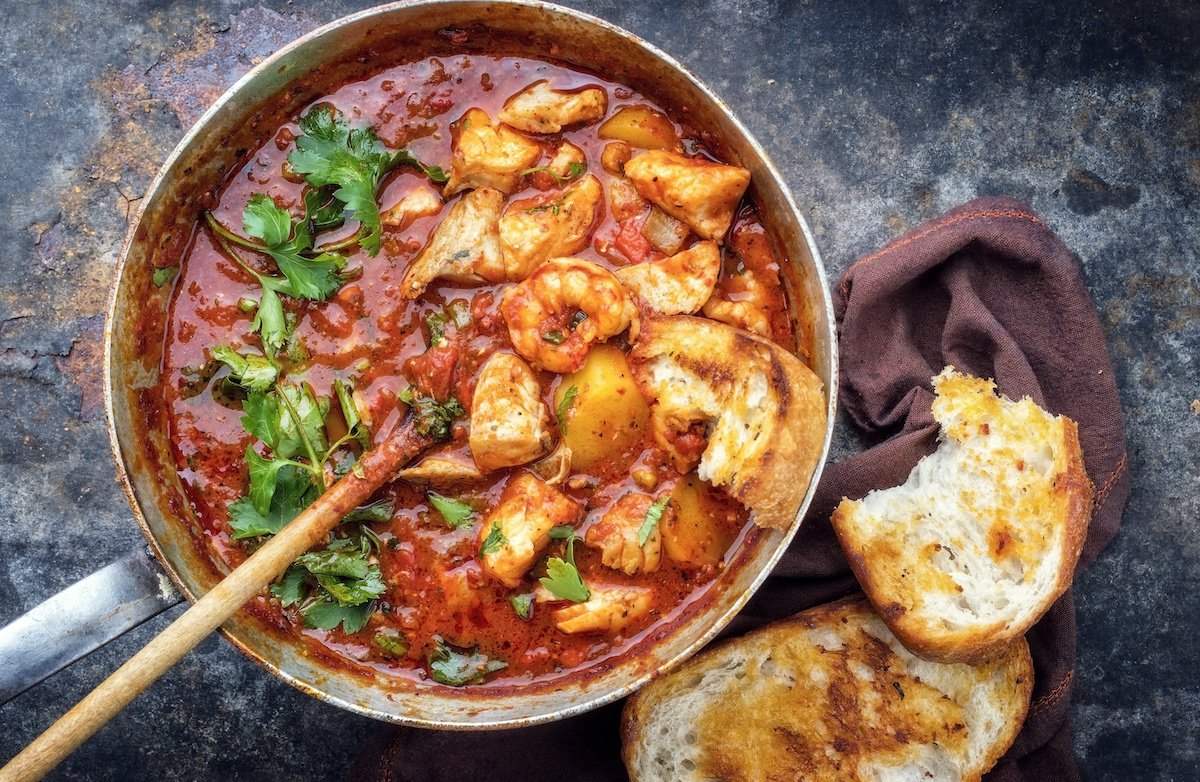New Orleans: The Northernmost Caribbean City in the American South.
New Orleans, often whispered about as "the northernmost Caribbean city," is a mesmerizing cultural archipelago on the mainland—where Creole traditions, Caribbean rhythms, island flavors, and colonial architecture blend seamlessly with Southern hospitality, creating an intoxicating destination that offers the best of both worlds.
Picture yourself wandering down cobblestone streets flanked by buildings adorned with ornate wrought-iron balconies, the sultry air thick with the aromas of simmering seafood and spices, while jazz rhythms pulse from nearby courtyards. You could be in Havana, Santo Domingo, or San Juan—but you're actually in the enchanting city of New Orleans. When dreaming of your next escape, must you choose between the sun-drenched allure of Caribbean islands and the storied grandeur of the American South? New Orleans awaits—a city where centuries of Caribbean influence have created a cultural alchemy unlike anywhere else in North America. Often whispered about as "the northernmost Caribbean city," New Orleans exists as a mesmerizing cultural archipelago on the mainland—where Creole traditions, Caribbean rhythms, island flavors, and colonial architecture blend seamlessly with Southern hospitality, creating an intoxicating destination that offers the best of both worlds without requiring your passport.
A Shared Colonial History
The tangled roots of New Orleans and the Caribbean isles intertwine through the centuries, bound by the shared hands of colonial powers. Far from being casual neighbors, these lands were siblings raised by the same European parents—France and Spain—whose imperial fingerprints remain visible on every street corner and courthouse square. When the Crescent City changed hands between empires like a prized jewel in the 18th century—French to Spanish and back to French again—before joining the American tapestry through the Louisiana Purchase in 1803, it never severed its umbilical connection to the islands. Ships laden with sugar, coffee, and exotic timber plied the waters between New Orleans and Havana, Santo Domingo, and Port-au-Prince, their billowing sails carrying not just cargo but culture across the azure waters of the Gulf.
The Caribbean Migration
The most profound Caribbean embrace came in a wave of humanity seeking refuge from revolution. In the early 19th century, thousands fled the Haitian Revolution's flames, bringing their possessions and souls to New Orleans. This massive exodus nearly doubled the city's population overnight, infusing its bloodstream with Caribbean traditions that would forever alter its cultural DNA. These weren't merely refugees but cultural ambassadors— people who carried their entrepreneurial fire, culinary genius, and artistic expressions into their adopted home. Their influence wasn't so much a spice added to the gumbo pot as it was a fundamental rethinking of the recipe itself, transforming New Orleans irrevocably.
Architectural Similarities
Allow your gaze to wander up the facades of the French Quarter, and you might momentarily forget which shore you stand upon. The delicate lacework of ironwork balconies, like black mantillas framing the faces of buildings, mirror those found in Old Havana. Secret interior courtyards hide behind weathered wooden doors, their fountain-centered oases echoing similar sanctuaries in San Juan. The candy-colored buildings—painted in sherbet hues of lemon, mint, and coral—could be plucked straight from the streets of Santo Domingo or Cartagena. Even the iconic "shotgun houses" that march in neat rows through residential neighborhoods trace their lineage directly to Haiti, their long, narrow silhouettes designed for maximum ventilation in tropical climates, brought to Louisiana not by architects but by the memories of those who fled revolution with building traditions tucked alongside family heirlooms.
A Shared Culinary Soul
In the context of Cajun and Creole cooking, the "holy trinity" refers to the foundational trio of onions, bell peppers, and celery used as a base for many dishes like gumbo, jambalaya, and étouffée.
The kitchens of New Orleans speak in a dialect seasoned by Caribbean influences, a culinary conversation centuries in the making. The holy trinity of Creole cooking—the rhythmic dance of knife on cutting board as bell peppers, onions, and celery are transformed into aromatic foundations—mirrors the Caribbean "sofrito" that forms the soul of island cuisine. When spoons dip into steaming bowls of gumbo, they're swimming in waters connected by underground currents of the Caribbean. The marriage of European techniques with African ingredients and Native American elements created not fusion but something entirely new—a culinary language spoken fluently in both New Orleans and throughout the Caribbean basin. From the humble red bean (haricot rouge in the French Quarter, habichuelas in Puerto Rico) to the elaborate seafood boils that celebrate the Gulf's bounty, the conversations between these kitchens continue daily, each feeding the other across miles of sea.
Musical Connections
Listen closely to the brass bands that strut through the streets of New Orleans, and you'll hear echoes bouncing back from Havana, Kingston, and Port-au-Prince. The heartbeat of early jazz incorporated the polyrhythms carried north from Cuba and Haiti, syncopations that transformed European marches into something wilder and more profound. When second-line parades wind through neighborhoods, with their swaying, dancing "second line" of revelers following the main band, they perform rituals spiritually twinned with Caribbean carnival processions. The infectious spirit that drives strangers to join the dance, handkerchiefs waving above their heads, courses through veins connected to island celebrations where boundaries between performer and audience dissolve. Even today, as trumpets wail from Frenchmen Street clubs and trombone slides glisten under stage lights, they're catching reflections of Caribbean moonlight on their polished brass.
Spiritual Traditions
In hidden courtyards and back-room altars throughout New Orleans, spiritual practices glow with Caribbean fire. The Voodoo traditions that found fertile ground in Louisiana soil were carried directly from Haiti, where African religions had already undergone a transformative dialogue with Catholic saints. Marie Laveau, the legendary Voodoo Queen whose name still reverberates through the city, practiced ceremonies that would be recognized by any Haitian mambo or houngan. Saints and lwa (spirits) share the same sacred spaces, their identities are sometimes merged, sometimes distinct, but always in conversation. Catholic processions wind through the French Quarter while drums beat patterns unchanged since they crossed the Middle Passage, creating a spiritual landscape.
Climate and Lifestyle
The sultry embrace of New Orleans weather mimics the Caribbean's tropical temperament, shaping not just the landscape but the rhythm of daily life. Afternoon thunderstorms sweep in with theatrical drama during summer months, sending café-goers scurrying under awnings before the sun reappears to transform puddles into steam. The wisdom of siesta culture prevails in both places—shutters close against the fierce midday heat, businesses observe an unwritten pause, and life slows to match the languid pace dictated by humidity and sunshine. Evening brings relief and renewal, as residents emerge to socialize on porches and plazas cooled by Gulf breezes. The lush botanical extravagance—magnificent magnolias, riots of bougainvillea, stately palms reaching skyward—creates an environment where nature refuses to be tamed, jungle-like in its insistence on growth and regeneration, connecting New Orleans more closely to tropical islands than to its continental neighbors.
Carnival Culture
In no tradition is the Caribbean-New Orleans kinship more vibrantly displayed than in the magnificent spectacle of Mardi Gras. Behind the beads and revelry lies a cultural practice with a direct lineage to Caribbean carnival traditions. The elaborate krewes with their fantastic costumes, the masked balls where identity slips behind sequined disguises, the street parades with their ritualized excess. For a brief, glittering moment each year, the invisible bridges between New Orleans and its island cousins become manifest, adorned in purple, green, and gold.
Caribbean Experience Without the Caribbean Price Tag
Imagine savoring all these Caribbean delights without the eye-watering expense of island hopping. While the glittering shores of Jamaica, the Bahamas, and St. Lucia beckon with their postcard perfection, they also command a premium that can leave your wallet feeling considerably lighter. New Orleans, by contrast, offers a sumptuous cultural feast without the accompanying financial famine.
The mathematics of memory-making tilts decidedly in New Orleans' favor. Perhaps most valuable is how New Orleans invites authentic cultural immersion without additional expenditure. Where all-inclusive Caribbean resorts often create beautiful but sterile bubbles that separate travelers from the genuine pulse of local life, New Orleans throws open its doors and pulls you directly into its rhythmic heart. The most transformative experiences—impromptu brass band performances on street corners, centuries of history written in architectural details, conversations with locals who treat storytelling as a fine art—come without price tags attached. The street performers of Jackson Square, the magnificent St. Louis Cathedral rising against azure skies, the intoxicating melodies floating from open windows at dusk—these treasures cost nothing yet create the indelible moments that define truly exceptional travel.
Experience the Caribbean Soul of New Orleans
When you visit New Orleans, you're not just experiencing one culture but a beautiful tapestry woven from many traditions. The Caribbean influence gives the city its distinctive flair—a certain je ne sais quoi that separates it from any other American destination.
For travelers seeking to immerse themselves in this unique blend of Caribbean and Southern culture, location is everything. Hotel Maison Pierre Lafitte sits at the perfect crossroads of these influences, nestled in a historic building. Whether you're sipping a rum cocktail on our balcony or setting out to explore the rhythmic streets of the French Quarter, you'll find Hotel Maison Pierre Lafitte is the ideal home base for discovering why New Orleans truly is the northernmost city of the Caribbean.
Schedule your stay at Hotel Maison Pierre Lafitte in New Orleans, and allow us to be your central ground to experience the Caribbean soul of New Orleans.



